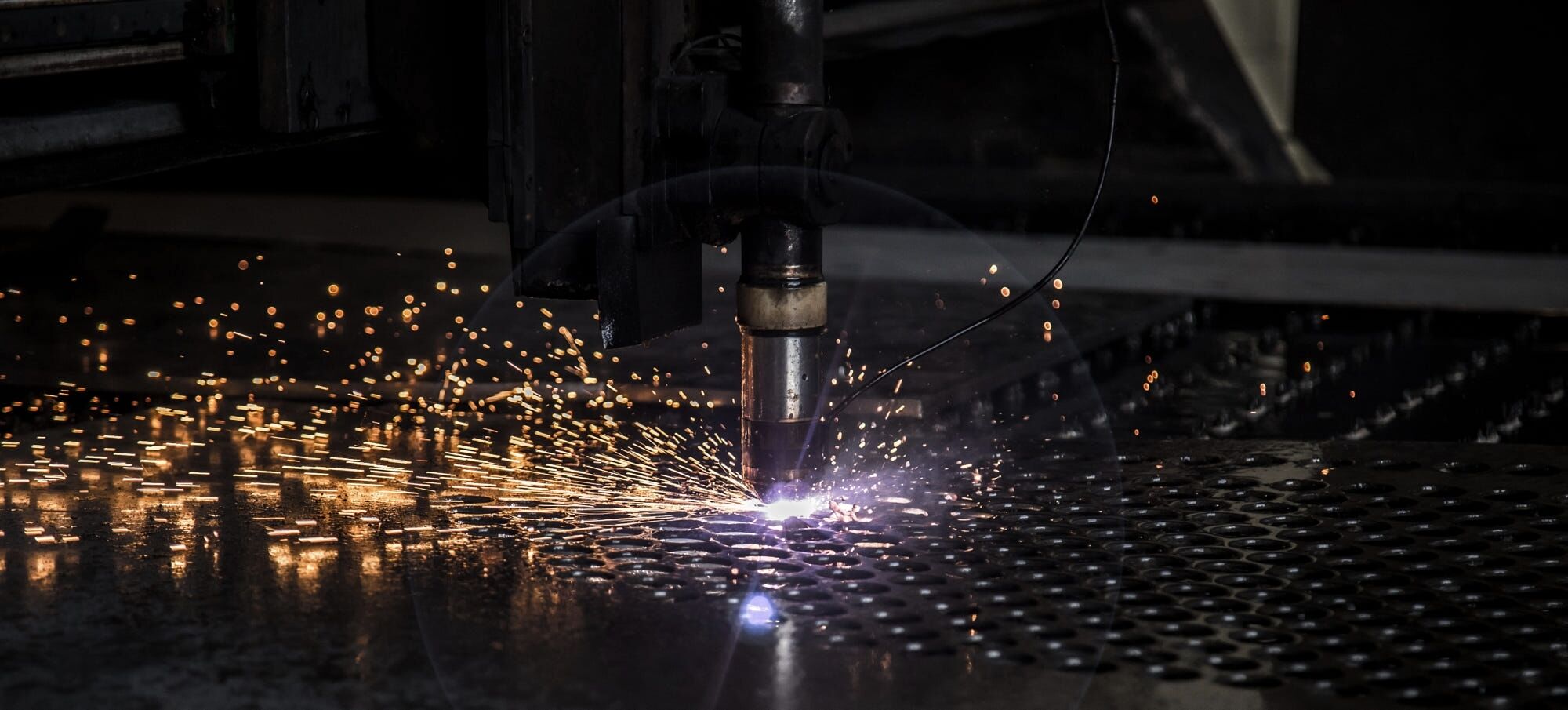超硬材料において正確で高品質な切断を達成することは、設定の構成に大きく依存しています。 レーザー切断機 これらの設定は切断プロセスに直接影響を与え、材料がきれいに切断されるか、損傷を受けるかを決定します。誤った調整は、熱損傷、不完全な切断、さらには材料の亀裂などの問題を引き起こす可能性があります。各設定の影響を理解することで、これらの問題を回避し、切断性能を向上させることができます。これらの構成をマスターすることで、より良い結果を得て、コストのかかるエラーを最小限に抑えることができます。
超硬質材料の切削の課題
超硬質材料の定義
超硬材料は、遭遇する可能性のある最も硬い物質の一つです。これらの材料には、ダイヤモンド、立方晶窒化ホウ素(CBN)、および特定のセラミックスが含まれます。その卓越した硬度は、これらを理想的な材料にします。 申請 耐久性が求められるもの、例えば切削工具、航空宇宙部品、産業機械など。しかし、その特性自体が加工を難しくしています。材料が「超硬」と見なされるための条件を理解することは、それを切断しようとする前に重要です。硬度は通常、モース硬度計またはビッカース硬度試験を使用して測定され、超硬材料はこれらのスケールの最上位にランクされています。変形や摩耗に対する抵抗力が、他の材料とは異なる点です。
超硬質材料の切削が難しい理由
超硬質材料の切断には、独特の課題があります。その硬さは、物理的な摩耗や機械的な力に頼る従来の切断方法には耐えられません。従来の工具は、これらの材料に使用するとすぐに摩耗したり、完全に故障したりすることがよくあります。さらに、超硬質材料は熱伝導率が低い傾向があるため、切断中に熱が蓄積します。この熱は、マイクロクラックや構造の弱化などの熱損傷につながる可能性があります。また、脆さの問題に直面する可能性もあります。これらの材料は硬いですが、不適切な切断条件では破損したり欠けたりすることがあります。これらの要因により、きれいで正確な切断を実現するには、レーザー切断機の設定を正確に制御する必要があります。
超硬質材料のレーザー切断の利点
レーザー切断は、超硬質材料を扱う際に大きな利点があります。従来の方法とは異なり、レーザーは集中した光エネルギーを使用して、直接接触することなく材料を切断します。このアプローチにより、ツールの摩耗が最小限に抑えられ、機械的ストレスが発生するリスクが軽減されます。レーザー切断の精度により、複雑なデザインと厳しい許容差を実現できます。これは、電子機器や航空宇宙などの業界でよく求められます。さらに、レーザー切断では仕上がりがきれいになり、後処理の必要性が減ります。レーザー切断機の設定を最適化することで、これらの利点を活用して、超硬質材料がもたらす課題を克服できます。
レーザー切断機の主な設定とその効果
レーザー出力
レーザー出力は、カットの品質を決定する上で重要な役割を果たします。レーザー出力は、材料に供給されるエネルギー量を制御します。出力レベルが高いほど、より厚い超硬質材料をカットできますが、熱による損傷のリスクも高まります。過度の熱は、微細な亀裂や歪みを引き起こし、精度を損なう可能性があります。一方、出力が不十分な場合は、カットが不完全になったり、エッジが粗くなったりする可能性があります。
レーザー出力を最適化するには、材料の厚さと熱伝導率を考慮する必要があります。たとえば、熱伝導率の低い材料は、過熱を避けるために慎重に調整する必要があります。中程度の出力設定から始めて、カット品質を観察しながら徐々に上げていきます。このアプローチは、効率と精度のバランスを見つけるのに役立ちます。常にマシンのパフォーマンスを監視して、一貫した結果を確保してください。
切断速度
切断速度は、切断の精度と滑らかさに直接影響します。速度を高く設定しすぎると、レーザーが材料を完全に貫通する時間が足りなくなる可能性があります。その結果、不均一な切断や不完全な切断が発生する可能性があります。逆に、速度が低すぎると、熱が過剰に蓄積され、焼け跡や熱影響部が生じる可能性があります。
最適な切断速度を得るには、材料の硬さと厚さに合わせてください。さまざまな速度でテスト切断を行い、最もきれいなエッジが得られる設定を特定します。速度とレーザー出力の相互作用に注意してください。出力設定を高くすると、切断速度が速くなることがよくありますが、それは材料が熱に耐えられる場合に限られます。両方のパラメータを一緒に調整すると、最良の結果が得られます。
焦点位置
焦点位置によって、レーザー ビームが材料のどこに収束するかが決まります。適切な焦点により、レーザーのエネルギーが適切なポイントに集中し、切断効率が最大限に高まります。焦点位置が間違っていると、エッジの品質が低下したり、切断に失敗することもあります。超硬質材料の場合、焦点調整の精度が特に重要です。
焦点位置を設定するには、マシンの焦点調整ツールまたはソフトウェアを使用します。厚い材料の場合は、焦点を材料の表面よりわずかに下に配置します。このテクニックにより、レーザーはエネルギーを失うことなくより深く浸透します。わずかなずれでもカット品質に影響する可能性があるため、焦点位置を定期的に確認して再調整してください。一貫した焦点調整により、レーザー切断マシン設定の全体的なパフォーマンスが向上します。
補助ガスとガス圧
アシストガスは、レーザー切断、特に超硬質材料を扱う際に重要な役割を果たします。アシストガスは、切断領域から溶融材料を除去し、エッジをきれいにし、破片の蓄積を防ぎます。使用するガスの種類と圧力は、切断の品質と精度に直接影響します。これらのパラメータを最適化する方法を理解することで、結果を大幅に改善できます。
切断プロセスでは、ガスの種類によって目的が異なります。たとえば、酸素は燃焼を促進することで切断速度を高めます。これは厚い材料に最適です。一方、窒素は酸化を防ぎ、より滑らかで磨かれたエッジを実現します。アルゴンは別の選択肢で、不活性な環境を作り出すため、化学反応を起こしやすい材料によく使用されます。適切なガスの選択は、切断する材料と希望する仕上げによって異なります。
ガス圧も同様に重要です。高圧にすると、切断面から溶けた材料が効果的に除去され、不完全な仕上がりになるリスクが減ります。ただし、圧力が高すぎると、材料のエッジが粗くなったり、歪みが生じたりすることがあります。圧力が低いと、破片が除去されず、不均一な切断面や焦げ跡が生じることがあります。最適な圧力を見つけるには、メーカーの推奨事項から始めて、テスト切断を行います。結果を観察しながら圧力を徐々に調整し、最適なバランスを実現します。
ノズルの設計と位置合わせも考慮する必要があります。ノズルの位置が適切であれば、補助ガスが切断領域に直接流れ込み、その効果が最大限に発揮されます。ノズルを定期的に点検して清掃し、一貫したパフォーマンスを維持してください。わずかな詰まりや位置ずれでも、切断の品質に影響する可能性があります。
補助ガスを慎重に選択し、その圧力を微調整することで、レーザー切断機の設定のパフォーマンスを向上させることができます。細部にまで注意を払うことで、よりきれいな切断が保証され、後処理時間が短縮され、材料の無駄が最小限に抑えられます。
超硬質材料のレーザー切断における一般的な問題のトラブルシューティング
超硬質材料のレーザー切断では、結果の品質に影響を与える課題がしばしば発生します。これらの一般的な問題を理解し、その対処方法を学ぶことで、よりきれいで正確な切断を実現できます。以下に、最も頻繁に発生する問題と、それらを解決するための実用的なソリューションをいくつか示します。
火傷跡と熱影響部
切断プロセス中に過度の熱が蓄積すると、焼け跡や熱影響部 (HAZ) が発生します。これらの欠陥は、材料の外観に影響を与えるだけでなく、構造の完全性を弱める可能性もあります。切断領域の近くに変色、粗いエッジ、または小さな亀裂が見られる場合もあります。
焼け跡を防ぐには、まずレーザー切断機の設定を最適化します。レーザー出力を少し下げて、熱の発生を最小限に抑えます。切断速度を調整して、レーザーが 1 か所に長時間留まらないようにします。窒素などの補助ガスを使用すると、材料を冷却して酸化を防ぐこともできます。ノズルが詰まっているとガスの流れが妨げられ、冷却が不均一になる可能性があるため、ノズルが詰まっていないか定期的に点検してください。
焼け跡が残る場合は、焦点位置の再調整を検討してください。レーザー ビームの焦点が不適切だと、意図しない場所に熱が集中し、やけどの危険性が高まります。最終作品の作業を始める前に、必ず廃材でテスト カットを行って設定を微調整してください。
不完全または不均一なカット
不完全なカットや不均一なカットは、多くの場合、不適切な機械設定や材料の不一致が原因です。レーザーが材料を完全に貫通できず、粗いエッジやギザギザのエッジが残ることがあります。この問題は時間と材料を無駄にする可能性があるため、迅速に対処することが重要です。
まず、レーザー出力をチェックします。出力が不十分だと、超硬質材料を切断するのに十分なエネルギーが得られない場合があります。切断品質を監視しながら、徐々に出力を上げます。次に、切断速度を評価します。速度が速すぎると、レーザーが材料の一部を飛ばしてしまい、切断が不完全になる可能性があります。きれいで連続した切断ができるようになるまで、徐々に速度を下げます。
材料の厚さと熱伝導率も重要な役割を果たします。厚い材料や熱伝導率の低い材料の場合は、追加の調整が必要になる場合があります。アシストガスの圧力が切断領域から溶融材料を除去するのに十分であることを確認してください。ガス圧力が低いと、レーザーの経路に破片が残り、切断が妨げられる可能性があります。機械ベッドと機械部品の定期的なメンテナンスも、切断精度の維持に役立ちます。
材料の割れや欠け
割れや欠けは、脆い超硬質材料を扱う際によく発生する問題です。これらの欠陥は、材料の機能性と美観を損なう可能性があります。これらは、切断プロセス中の過度の熱応力や不適切な取り扱いによって発生することがよくあります。
ひび割れのリスクを減らすには、熱分布の制御に重点を置きます。レーザー出力を下げて、材料への熱応力を最小限に抑えます。焦点位置を調整して、レーザー エネルギーが最適な深さに集中するようにします。アルゴンなどの補助ガスを使用すると、化学反応や熱による損傷を減らす不活性環境を作り出すことができます。
材料を慎重に扱うことも同様に重要です。切断中の振動を防ぐために、材料を機械のベッドにしっかりと固定します。わずかな動きでも脆い材料では微小な亀裂が生じる可能性があります。既存の欠陥がないか材料を検査してください。レーザーの熱で傷が悪化する可能性があります。これらの予防策にもかかわらず亀裂や欠けが生じた場合は、異なる切断パターンを試して、応力をより均等に分散してください。
これらの一般的な問題に対処することで、レーザー切断機の設定のパフォーマンスを向上させることができます。定期的な調整、テスト、メンテナンスにより、一貫した結果が得られ、材料の無駄が減ります。
レーザー切断機の設定を最適化することは、超硬質材料の正確で高品質な切断を実現するために不可欠です。キャリブレーション、テスト、定期的なメンテナンスに重点を置くことで、より良い結果を得ることができます。実験により、各材料に最適なパラメータを特定し、エラーを減らして効率を向上させることができます。これらの方法に常に注意を払うことで、切断のパフォーマンスが向上し、無駄が最小限に抑えられます。このブログで紹介されているヒントを適用して、プロセスを改良し、プロジェクトで一貫した成功を収めてください。
 EN
EN
 AR
AR
 FR
FR
 DE
DE
 JA
JA
 KO
KO
 RU
RU
 ES
ES


